Modern Property Marketing: Drone, CGI & Video for Smarter Selling
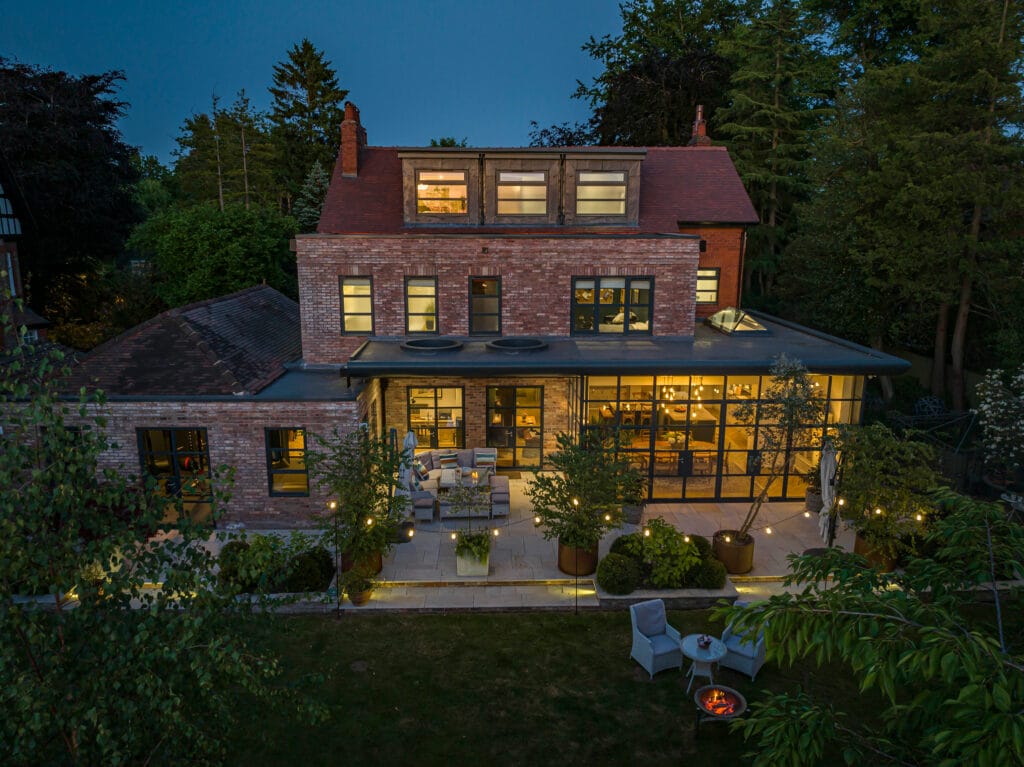
Competition within the property market continues to rise, and it is essential for the sellers to have great photos and videos to showcase their property. As of now, around 90% of home buyers are using online listings to shop. Hence, you need to use high quality visual content to catch the attention of these buyers. This is where cutting-edge tools like drones, CGI, and cinematic videos come into play to create next-level real estate marketing material. Taking Properties to New Heights with Drone Photography One of the biggest innovations in real estate photography in recent years is the use of drone photography and videography. Drones allow for stunning aerial shots of homes and surroundings that were impossible in the past. Bird’s-eye views display full property footprints, beautifully manicured gardens, impressive outdoor amenities like pools or tennis courts, and neighbourhood locales in one breathtaking photo. Whereas standard images might just provide a snapshot, sweeping drone videos expertly build excitement and showcase what makes the property exceptional. With more wow factor than still shots, these airborne videos help properties leap off listings pages. Most buyers simply can’t conceptualise what a property truly offers from just a few pictures. But seeing the big picture perspective that drones provide allows buyers to better understand the uniqueness and potential of the property. CGI Renders That Wow: Envisioning Possibilities Another modern marketing method gaining popularity are photorealistic CGI renderings and walkthrough videos. Particularly useful for new construction or redevelopment projects, CGI allows buyers to easily envision possibilities that do not presently exist on site. New build projects often start with just vacant land or an outdated existing structure awaiting demolition and total transformation. CGI renders showcase sleek exterior architectural plans and also provide simulated tours of gorgeous interiors before they are built out. For buyers struggling to grasp new development scope and scale, this is a game changer. CGI brings the design to life so they can see finished product potential – not just dirt lots or demolition messes. Similarly, outdated and neglected properties are often purchased for full gut rehabs and flips. In their existing state, they can be unappealing with major cosmetic damage or structural issues. CGI redesigns highlight modernised floor plans and display incredible after remodelling effects throughout. Instead of turning buyers away in person due to current condition, CGI allows them to look beyond to future renovation glory. Cinematic Videos: Emotional Storytelling Impactful real estate videos go beyond just factual depictions of properties for sale. Using professional cinematography, editing techniques, graphics, music and more, high quality real estate videos seek to form emotional connections between buyers and homes. That emotional bond is what turns initial interest into serious offers. Beautiful lifestyle reels showcase families happily enjoying impressive homes and surrounding areas. Dramatic drone flyovers reveal jaw dropping exteriors from refreshing angles. Smooth tracking shots usher buyers through bright, spacious interiors room by room. Close up b-roll draws attention to exceptional features and coveted amenities. Clean graphics highlight impressive specs and details. Background music sets the perfect tone throughout while keeping viewers engaged. The Next Level of Property Marketing Drone photography and video, photorealistic CGI renderings, and cinematic listing videos represent the next era of property marketing. As the first visual impression for potential buyers, great photos and video content gives homes a huge leg up in today’s competitive landscape. Properties demand the wow factor advantage these modern digital tools provide to sell faster and for more money in today’s marketplace. The stunning imaging, bold highlights, and emotional allure are exactly what properties need to capture buyer attention and imagination at that crucial first impression point.
How to Use CGI to Show Off Awkward or Empty Spaces
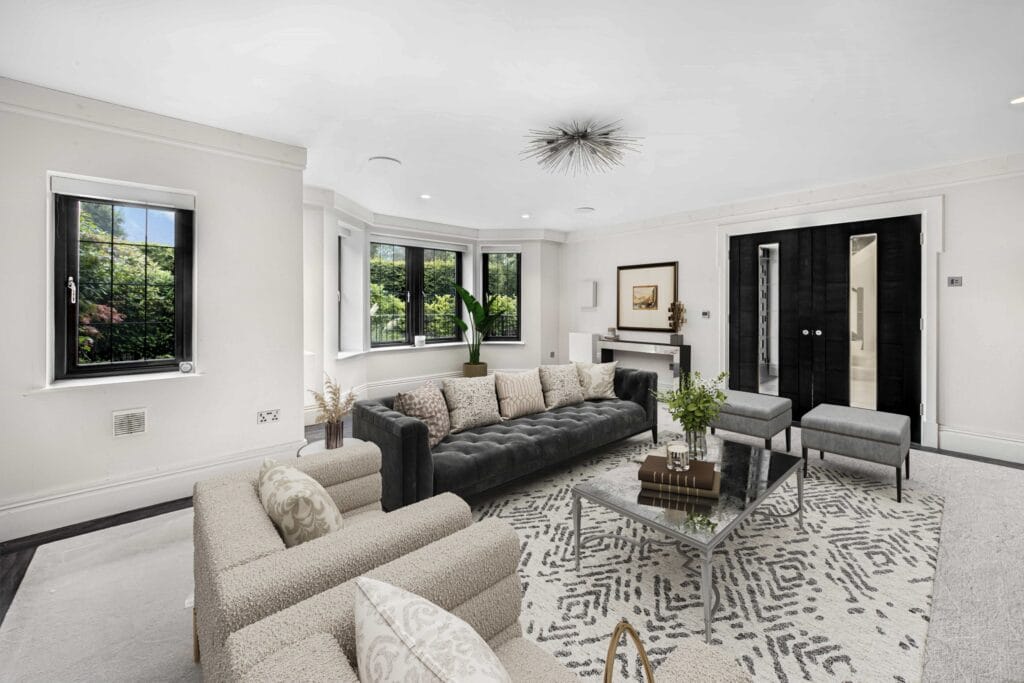
Selling a property with awkward or empty spaces can be challenging. The rooms may have strange dimensions, pillars in inconvenient places, or be completely unfurnished. While these quirks can turn off potential buyers or tenants, there are ways to downplay or even turn them into selling points. This is where creative CGI (computer-generated imagery) can come in handy for your property photography. Assess the Problem Areas First, walk through the property and make note of any spaces that seem problematic. This may be a long, narrow hallway, an unfinished basement, or an entire empty room. Consider what it is about the space that could put people off or leave them unsure about how to utilise it. The goal of using CGI is to address these issues directly. Think About the Possibilities Just because a space is currently awkward or empty doesn’t mean it can’t serve an important purpose with the right furnishings and layout. Even structural elements like pillars and low ceilings can be downplayed or incorporated into the design aesthetic. Brainstorm ideas for how the space could optimally be used, whether as a home office, playroom, reading nook, etc. CGI makes it possible to visualise anything you can imagine. Find Quality CGI Assets There are many resources for CGI models and assets, but quality can vary dramatically. Work with a reputable CGI artist or company that offers plenty of customisation options and high-resolution renders. For property photography, CGI elements should blend seamlessly into the environment, so realism is key. Spend time curating furniture, materials, lighting and accessories that suit the style of the home. Set Up the Base Photos Before inserting any CGI, set up and shoot the “base” photos showcasing the empty spaces as they currently exist. Take plenty of images from multiple angles, as this will provide flexibility later on. Neutral lighting tends to work best, avoiding harsh shadows that could limit options. Shoot RAW images for maximum quality and editing control. Backup all photos before editing. Plan the Shot List Conceptualise exactly how you want to portray the spaces and make a detailed shot list. This should specify where you’ll place furniture, how rooms will be styled, which angles you’ll use, etc. Planning ahead ensures the final CGI images support the intended narrative and style for marketing the property. It also informs what custom models you may need created. Insert the CGI Objects Using Photoshop or similar software, meticulously insert the CGI objects you’ve sourced, following your shot list. Adjust sizing, positioning and lighting as needed to fit, factoring in shadows, reflections and perspective. Composite multiple images to build up the desired styled look. Take your time with this step, as poor execution can make CGI very obvious. Enhance Photos Even after inserting CGI objects, photos may require colour correcting, exposure adjustments and retouching to finish the photorealistic look. Carefully review images at 100% magnification, making localised tweaks. Add final touches like props, wall art and textiles to enrich the spaces. Apply subtle grain or noise if necessary to offset over-smoothing. Showcase the Transformation With awkward empty rooms now full of furnishings and style, showcase the dramatic “before and after” transformation. The contrast speaks volumes, immediately conveying the potential of the previously unused space. Lead with the gorgeous CGI rendition, then include a smaller “before” image for context in marketing. The possibilities unlocked through CGI will capture buyer and tenant imaginations. CGI opens up new opportunities to showcase the versatility and best possible use of challenging property spaces. We at Hovver can help you with getting the most out of CGI for property staging. Take advantage of this potent visual marketing tool to pique interest and demonstrate exactly why your property has immense potential, despite any awkward quirks.
Attract More Buyers: CGI Staging Showcases Lifestyle Possibilities
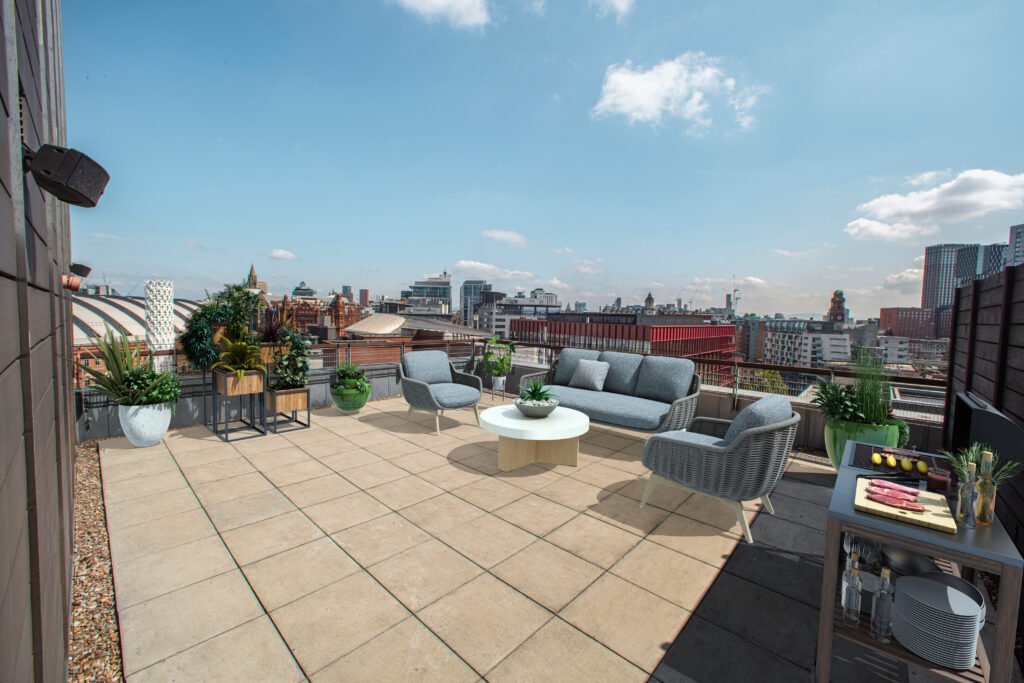
Selling a house fast requires an effective marketing strategy. Simply listing basic facts and photos will fail to ignite the imaginations of a buyer. If you can’t convey the potential of a home to a buyer, you will not be able to succeed with converting into a sale. This is where CGI staging comes in – using computer-generated imagery to stage homes virtually can highlight lifestyle possibilities and attract more buyers. CGI Staging Showcases Potential With CGI staging, homes can be portrayed furnished, renovated, or redesigned on a computer before going on the market. Empty rooms or needed upgrades that might turn off buyers can get transformed into bright, welcoming spaces showcasing possibilities. By creating lifestyle vignettes involving furniture, art, accessories, and even people, CGI staging helps buyers envision themselves living in the home. This spurs greater emotional connection and more offers. Adds Value, Saves Money Staging a home traditionally requires trucking in and arranging furniture, which can be costly. CGI staging offers estate agents and sellers all the benefits of showcasing a lifestyle without the hassle and expense of traditional staging. It also allows for easy editing and alterations of spaces. Whether preparing a home to list soon or considering future renovations that would upgrade marketability, CGI staging is an affordable way to add value now. Sellers can explore different looks without commitment, choosing the style that showcases each home’s unique potential and appeals to the widest range of buyers. Brings Vision to Life CGI staging makes it easy for buyers to visualise possibilities, from a coat of fresh paint to new floors and fixtures. Homes can shift from blank canvases to warm environments with the click of a mouse. For example, lackluster kitchens and bathrooms – the most important selling features according to recent surveys – can transform into contemporary, luxurious spaces primed with potential. Even outdated fixtures and finishes or worn carpeting can get replaced, depicting fashionable, inviting rooms. Spaces can also get furnished and decorated in various styles. Whether showcasing a family-friendly atmosphere with play areas and backyard patios, a chef’s kitchen entertainer’s dream, or a serene oasis, CGI staging sparks buyers’ imaginations about enjoying the home. Expands Marketing Reach and Options CGI staging broadens the marketing possibilities for estate agents and home sellers in today’s digital world. Listings can present multiple staging options to reach more buyers. A home could showcase a family-friendly scene on popular property sites but also present a rooted-in-nature vignette through social media targeted toward millennial buyers prioritising sustainability. CGI allows customisation of spaces efficiently to hook wider demographics. Plus, as virtual home tours and augmented and virtual reality expand in property market, having CGI staged spaces ready can save significant time and money down the road. Agents with a library of staged designs can quickly adapt to incorporate these tech tools into their marketing strategy as the future unfolds. Final Words As you can see, modern home buyers respond to lifestyle-oriented marketing that allows them to envision living in a home. By showcasing spaces digitally staged to highlight possibilities, CGI staging taps into buyers’ emotions and imaginations, attracting more potential buyers faster in today’s highly competitive housing market.
The Evolution of Property Marketing Technology
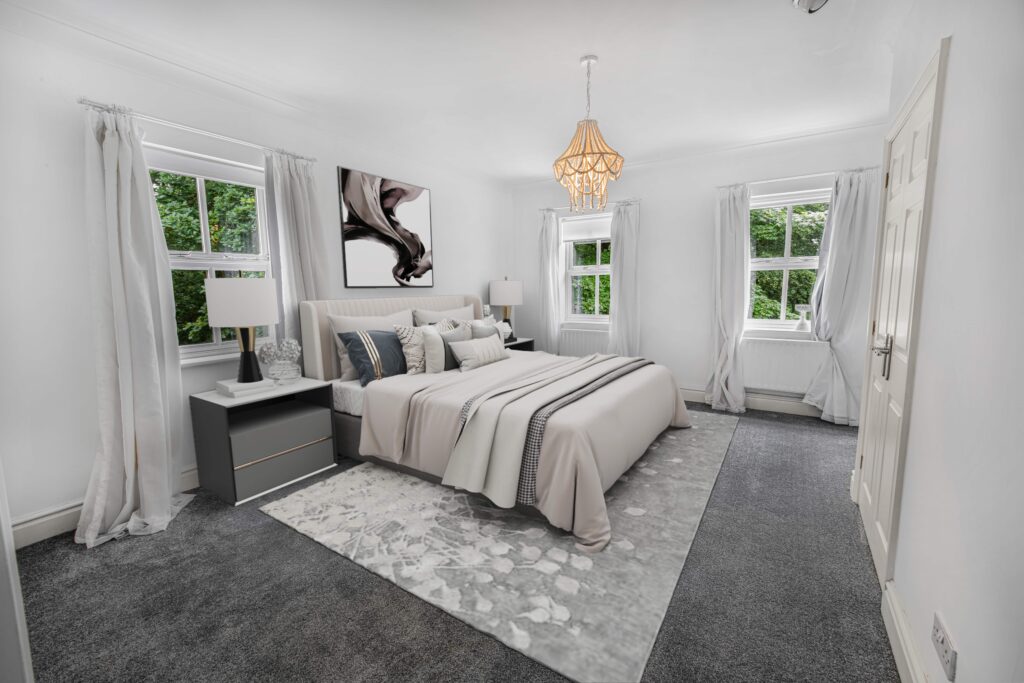
The property industry has undergone a digital transformation in recent years. From augmented reality home tours to automated valuation models, technology is changing how properties are marketed, valued, and sold. This technological evolution aims to improve efficiency, reach more buyers, provide a better customer experience, and gain a competitive advantage. Lets dive into some property marketing technology. The Rise of Online Property Portals The early days of property marketing centered on print ads in local newspapers and magazines. This evolved into proprietary property websites in the 1990s where estate agents listed properties for rent or sale. The launch of digital property portals such as Rightmove in 2000 and Zoopla in 2008 ushered in a new era, providing U.K. home buyers and renters an easy way to browse properties from the major estate agents on a single platform. Their popularity has made them an essential online marketing channel for agencies to feature their property listings and maximise exposure. Today, over 75% of prospective buyers use these portals when house hunting. The Influence of Social Media While online property portals remain dominant, social media presents new marketing possibilities for property agencies. Over 80% of home buyers use social networks like Facebook and Instagram during their research process. Agencies use platforms like Instagram to give quick video tours of new listings. Facebook groups focused on properties in specific cities or neighborhoods to build connections with engaged local audiences. Strategic use of social media expands an agency’s reach beyond property portals. If you want to conquer social media, you should be extra mindful about the property photos you capture. Automation Tools Gain Traction Manual tasks like listings management and lead follow-up have hampered agent productivity. New PropTech tools use automation and AI to save time on admin work so agents can focus on high-value activities. Customer relationship management (CRM) platforms streamline lead acquisition and communication efforts in a single dashboard. Automated valuation models deliver faster home appraisals using local market data and comparable sales. Machine learning algorithms even create property descriptions and listings automatically from basic inputs. As these AI-enabled solutions mature, agencies stand to improve significantly on efficiency and response times. The Rise of 3D Home Tours and Augmented Reality Staging a home to attract buyers is costly and time-consuming. That led to the evolution of 3D home tour technology powered by computer vision and photogrammetry. Using a smartphone camera, agents can capture a property’s dimensions to build an interactive 3D/VR model for online viewing. This can take virtual staging to the next level. Digitisation makes empty properties more appealing to prospective buyers. Augmented reality (AR) offers an even more immersive experience via smartphones and virtual reality headsets. Buyers can digitally walk through a life-sized 3D replica of homes. Interactive AR also details furnishings, lighting changes, and more contextual data difficult to portray in photos. As both technologies mature, virtual access promises to further supplant physical viewings. The Future with Big Data and Blockchain Looking ahead, big data aggregated from property websites, public records, IoT sensor networks, and consumer tracking promise more predictive insights to optimise pricing and time-to-sell. Meanwhile, blockchain technology tagged to digital land titles and property transactions could eliminate paperwork, speed up buying/selling, improve transparency, and reduce fraud. While adoption remains in early stages, the long-term implications for agents are increased efficiency and higher customer satisfaction. Property marketing technology is always developing, we will keep you posted here!
Reasons Why Virtual Staging Is A No-Brainer For Estate Agents
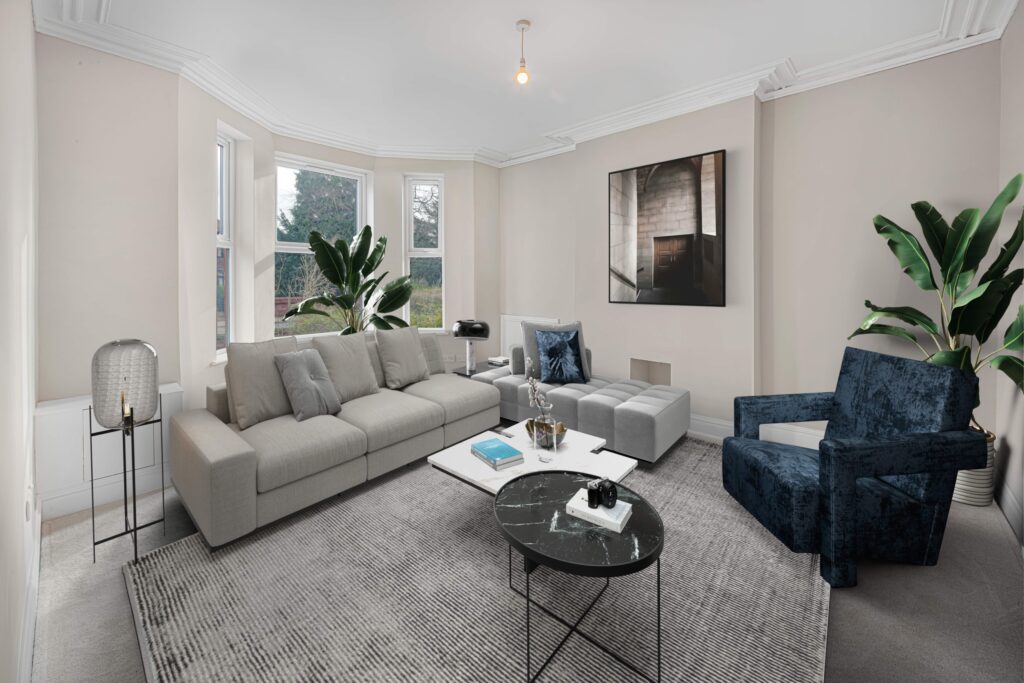
Virtual staging offers a number of advantages for real estate buyers. From earlier reports, we found that most agents said staging a house helped buyers visualise it as a future home. According to buyers, properties for sale should look like those on television. You can enhance property images by adding virtual furniture, decor, and other elements, presenting a space in its best light. How to achieve it? Hiring expert real estate photographers can help you accomplish this. Reasons why virtual staging is no-brainer for estate agents. What is Virtual Staging? Real estate professionals use virtual staging to enhance and visualise a property’s interior spaces using digital technology. Unlike traditional staging, which involves physically placing furniture and decor in a property, virtual staging is a computer-generated technique that digitally adds furnishings and decorative elements to images of empty or under-furnished rooms. But you should consider hiring a reliable real estate photographer like Hovver. We offer professional real estate photography services in Manchester. Hoover provides property photography services that keep up with today’s trends, including virtual staging. Our other services include drone photography, videography, high-quality images and more. We use the latest tools and advancements available in the virtual staging. Reasons Why Virtual Staging Is A No-Brainer For Estate Agents Cost-effective Traditional staging methods often require significant expenditures on renting or purchasing furniture, decor, and the logistical challenges of moving items in and out of a property. In contrast, virtual staging eliminates these costs, making it a more budget-friendly alternative. Real estate photographers can achieve stunning, magazine-worthy visuals without substantial financial investments. Availability of Software Traditional staging can be a time-consuming process. Virtual staging allows photographers to transform an empty or poorly furnished space into a visually appealing showcase. The two methods most commonly used to achieve virtual staging are AI staging and CGI staging. Hovver offers both, and you can take a look at the differences here. Professional Skill Professional real estate agents have the skill and knowledge to showcase your property. They know how to market your property on different platforms (websites, social media). We know the visual appeal of marketing materials is crucial in attracting potential buyers, and virtual staging excels in this aspect. Professionally enhanced and aesthetically pleasing images created through virtual staging can make a property stand out in online listings, brochures, and promotional materials. The enhanced visuals capture attention and create a positive and lasting impression, contributing to increased interest and inquiries. Final words Virtual staging is a no-brainer for real estate photographers due to its cost-effectiveness, time efficiency, flexibility, and ability to create visually appealing marketing materials. It has become an essential and transformative tool in the competitive real estate market, providing photographers with the means to elevate their offerings and stay ahead in a rapidly evolving industry. For the best results, you should hire an experienced photographer and virtual staging company.
AI vs CGI: The Evolution of Property Staging in Real Estate
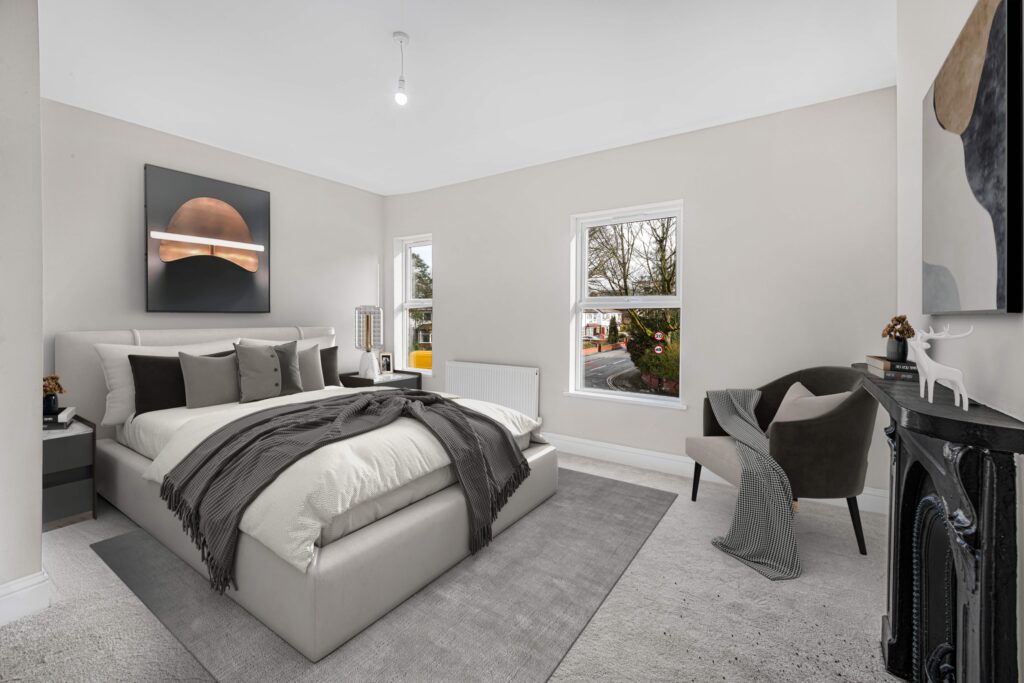
In the realm of real estate marketing, property staging plays a pivotal role in attracting potential buyers and enhancing property appeal. With advancements in technology, two innovative approaches have emerged: Artificial Intelligence (AI) and Computer-Generated Imagery (CGI). This article delves into the differences between AI and CGI property staging, exploring their benefits, limitations, and implications for the future of real estate marketing. 1. Exploring CGI Property Staging: CGI property staging involves the creation of photorealistic digital renders of properties, including furnishings, decor, and architectural elements. CGI artists meticulously design and render each detail, resulting in highly polished and customisable virtual staging solutions. 2. Understanding AI Property Staging: AI property staging utilises algorithms and machine learning to virtually stage properties by overlaying digital furnishings and decor onto real estate photographs. This technology analyses property images, identifies spaces, and suggests suitable virtual furnishings based on style preferences and trends. 3. Advantages of CGI Property Staging: 4. Benefits of AI Property Staging: 5. Limitations and Challenges: 6. Future Trends and Integration: As technology continues to evolve, the integration of AI and CGI in property staging is poised to revolutionize real estate marketing. Hybrid approaches that combine the efficiency of AI with the realism of CGI may emerge, offering the best of both worlds in property staging solutions. AI and CGI property staging represent groundbreaking advancements in real estate marketing, offering innovative solutions to enhance property appeal and attract buyers. Understanding the strengths, limitations, and future trends of AI and CGI staging is essential for property marketers looking to stay ahead in an increasingly competitive market. At Hovver, we embrace cutting-edge technology to deliver exceptional property marketing solutions. Whether utilising AI for efficient virtual staging or CGI for photorealistic renders, we tailor our services to meet the unique needs of our clients. We offer both AI and CGI staging. AI staging at £15 per photo, and CGI staging at £30 per photo. Contact us to elevate your property marketing efforts with the latest in AI and CGI staging technologies.
Virtual Staging: Transforming Empty Spaces into Irresistible Homes
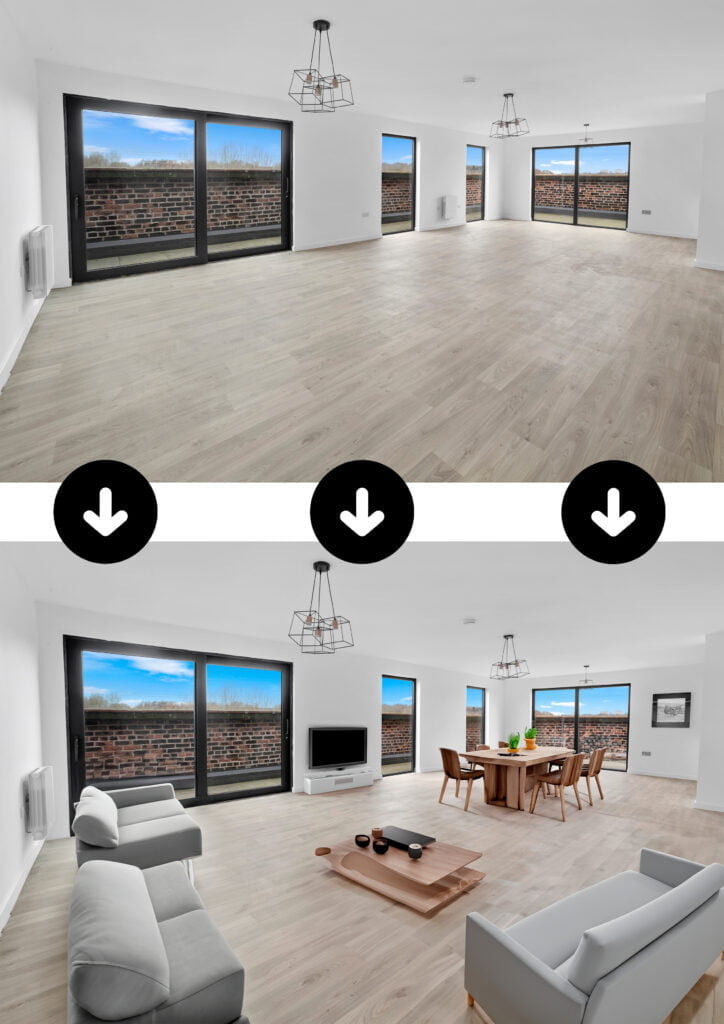
In the ever-evolving landscape of real estate, the visual allure of a property can make all the difference. Enter virtual staging – a game-changing technique that transforms empty spaces into vibrant, welcoming environments. At Hovver, we’ve mastered the art of virtual staging homes, and in this article, we unveil the secrets behind this digital magic, offering you insights that will revolutionise the way you approach property photography. 1. Bringing Empty Spaces to Life: Imagine the potential of showcasing a vacant property in its fully furnished glory. Virtual staging allows you to do just that. By seamlessly integrating furniture, decor, and style into empty rooms, you can help potential buyers visualise the possibilities, making your listings instantly more appealing. 2. Tailoring Styles to Target Audiences: One of the beauties of virtual staging is its adaptability. Tailor the style of each room to suit different target audiences. Whether it’s a cosy family home, a sleek urban apartment, or a sophisticated executive suite, virtual staging allows you to cater to diverse preferences, broadening your property’s appeal. 3. Cost-Effective Transformation: Compared to traditional staging, virtual staging is a cost-effective solution that doesn’t require the physical movement of furniture. It enables you to showcase multiple design options without the logistical challenges and expenses associated with physical staging, making it an ideal choice for budget-conscious property marketing. According to this physical staging company it costs 1-2% of your asking price. Ouch. 4. Time Efficiency: In the fast-paced world of real estate, time is of the essence. Virtual staging allows you to quickly transform a property’s visual presentation, reducing the time it takes to get it market-ready. It’s a time-efficient solution that aligns with the urgency often associated with property listings. 5. Flexibility and Reusability: Virtual staging provides unmatched flexibility. Easily make changes to furniture arrangements, colour schemes, or styles without the need for physical adjustments. Additionally, the staged images can be reused for various marketing materials, ensuring a consistent and polished brand presentation across platforms. 6. Enhanced Online Visibility: The digital realm is the first stop for potential buyers, and virtual staging enhances your property’s online visibility. Eye-catching, staged images are more likely to capture attention, leading to increased clicks and engagement on your listings. This can significantly improve your search engine ranking, drawing in more qualified leads. 7. Integrating Technology for Realism: Advancements in technology allow for hyper-realistic virtual staging. At Hovver, we leverage cutting-edge tools to ensure that the staged images seamlessly blend with the property’s original features, creating a cohesive and authentic visual representation that resonates with viewers. At Hovver, we believe in the transformative power of virtual staging to elevate your property game. Our expertise in this digital art ensures that your listings not only stand out but also resonate with the diverse tastes of your target audience. Ready to unlock the potential of your properties? Contact Hovver today, and let’s turn your vacant spaces into visual masterpieces that leave a lasting impression. Virtual staging homes is a worthwhile investment.
